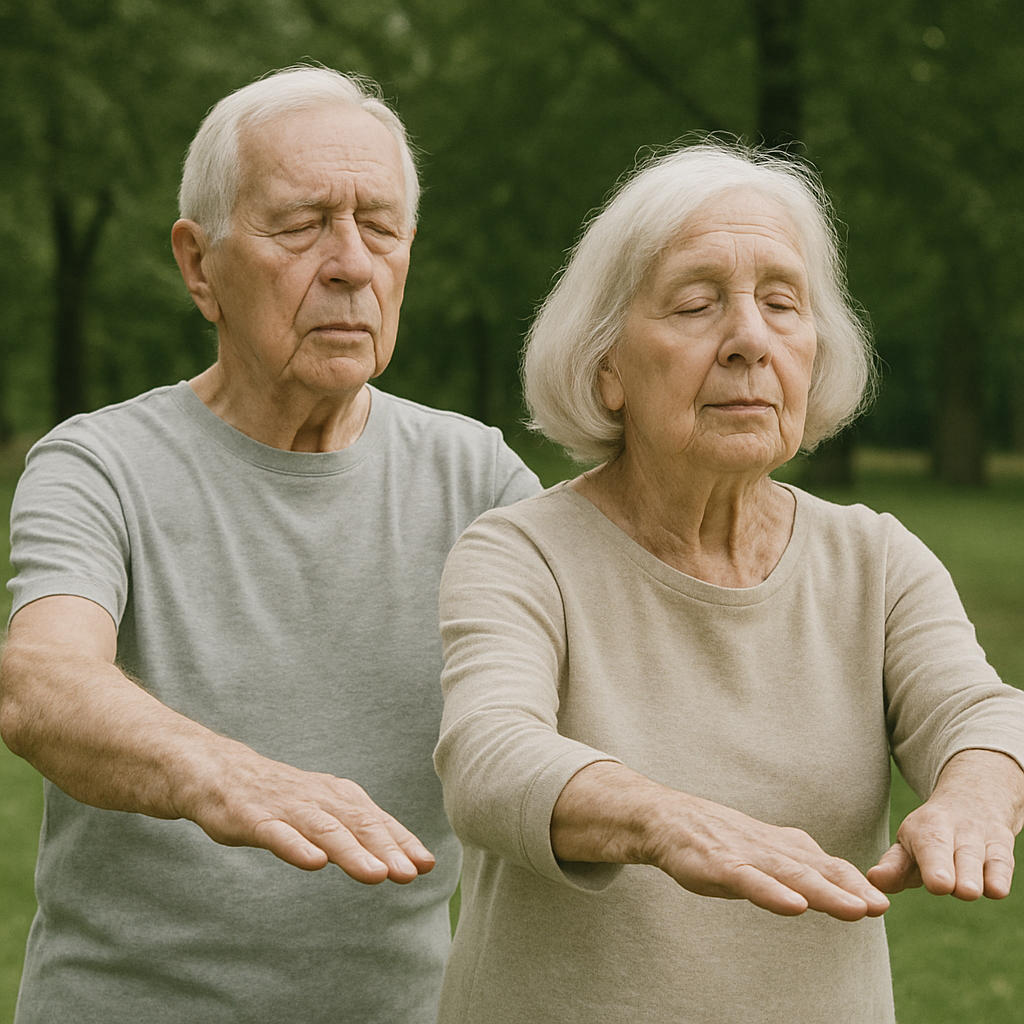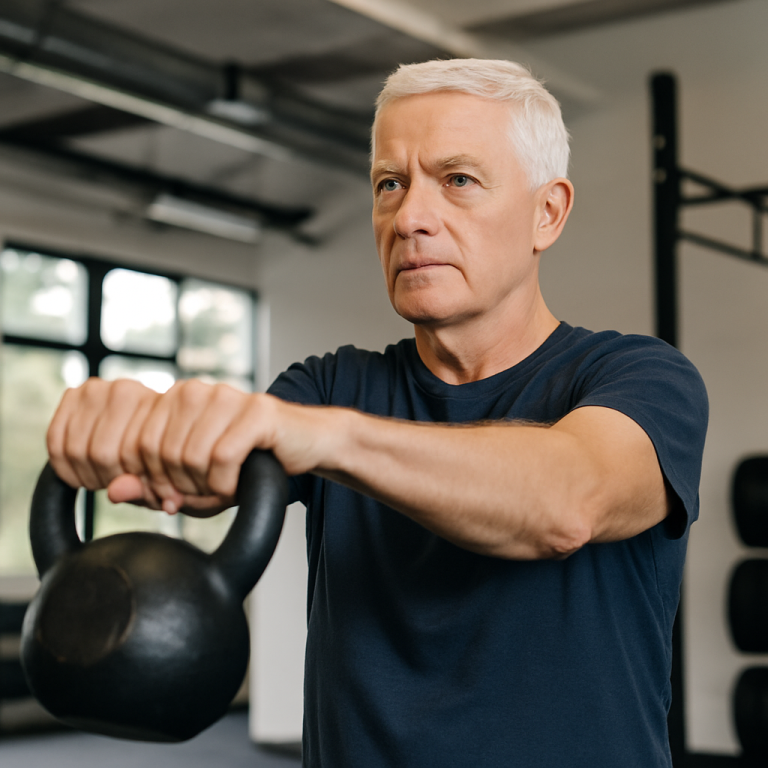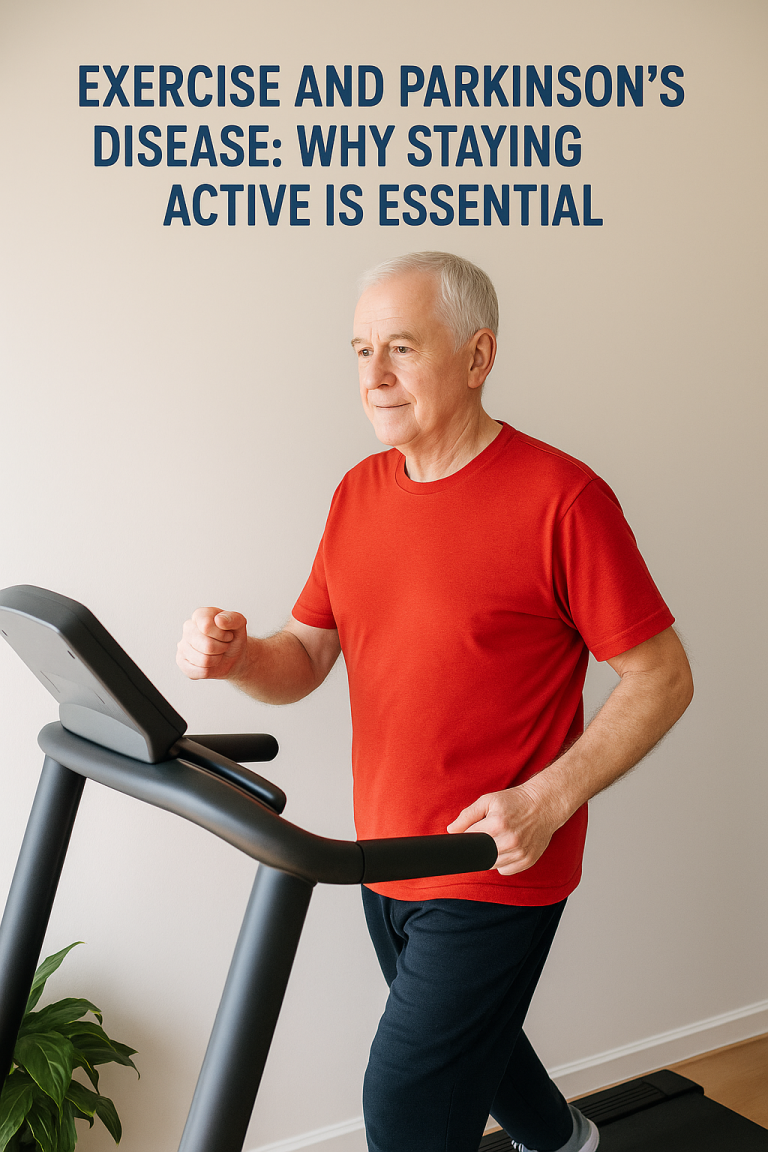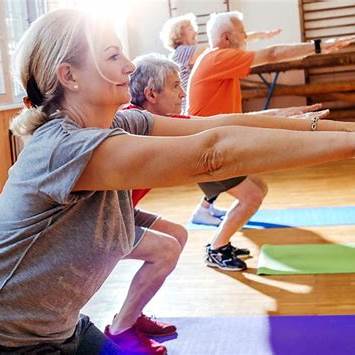As we age, maintaining physical health, emotional wellbeing, and mental clarity becomes increasingly important. Many older adults find themselves searching for practices that are safe, sustainable, and effective in supporting long-term wellness. One ancient practice that has stood the test of time is Qi Gong (pronounced chee-gong), a traditional Chinese system of gentle movements, breathing techniques, and mindfulness.
Qi Gong is often described as “meditation in motion,” blending slow, flowing exercises with an awareness of the breath and mind. Unlike more strenuous forms of physical activity, Qi Gong is accessible to nearly everyone, making it an ideal practice for older populations.
In this blog, we’ll explore what Qi Gong is, how it works, and the many benefits it brings to older adults.
What Is Qi Gong?
Qi Gong is a holistic system rooted in Traditional Chinese Medicine (TCM). The word Qi refers to “vital energy” or “life force,” while Gong means “skill” or “cultivation.” Together, Qi Gong translates as “the skill of cultivating energy.”
The practice combines:
-
Gentle physical movements – often slow and flowing.
-
Controlled breathing techniques – designed to enhance relaxation and energy flow.
-
Mindful awareness – cultivating calmness, focus, and a meditative state.
Qi Gong has been practiced for thousands of years to promote health, vitality, and spiritual wellbeing. Today, it is widely recognised worldwide as a gentle yet powerful form of exercise suitable for all ages.
Why Qi Gong Is Ideal for Older Adults
Many forms of exercise become harder to maintain as we age. High-impact activities, heavy lifting, or intense cardiovascular workouts may place stress on joints or pose risks for injury. Qi Gong, by contrast, is low-impact, highly adaptable, and requires no special equipment.
This makes it:
-
Accessible – movements can be modified for any fitness level.
-
Safe – reduced risk of strain or injury compared with high-intensity exercise.
-
Enjoyable – its meditative, calming quality makes it pleasant and sustainable.
-
Practical – can be practiced indoors, outdoors, alone, or in groups.
Physical Benefits of Qi Gong for Older Adults
1. Improved Balance and Stability
Falls are one of the most common risks for older adults, often leading to serious injury. Qi Gong’s gentle weight-shifting and controlled movements help strengthen the legs and core, improving balance and stability. Regular practice enhances proprioception (the body’s sense of position and movement), which is vital for preventing falls.
2. Increased Flexibility and Mobility
Qi Gong encourages fluid movement through the joints, muscles, and connective tissues. This helps to reduce stiffness, ease joint pain, and improve overall mobility—particularly important for older adults who may experience arthritis or reduced flexibility.
3. Enhanced Circulation
The flowing movements and deep breathing techniques stimulate blood flow and lymphatic circulation. Better circulation helps deliver oxygen and nutrients to the body’s tissues while aiding in the removal of toxins.
4. Strengthened Muscles Without Strain
Although Qi Gong movements are gentle, they engage the muscles in a controlled, sustained way. This helps maintain muscle tone and strength without placing unnecessary stress on the joints.
5. Support for Respiratory Health
Qi Gong breathing exercises strengthen the lungs, encourage fuller oxygen intake, and can support better respiratory health. For older adults managing conditions like asthma or COPD, this can be particularly beneficial.
6. Boosted Immune Function
Studies suggest that regular Qi Gong practice may strengthen the immune response by reducing stress and supporting overall vitality. A healthy immune system is especially important as we age.
Mental and Emotional Benefits
1. Reduced Stress and Anxiety
The combination of mindful breathing and flowing movements encourages a state of calm relaxation. Many practitioners describe Qi Gong as “moving meditation,” which helps reduce stress hormones and promote emotional balance.
2. Improved Cognitive Function
Research shows that mind-body practices like Qi Gong may help maintain cognitive health in older adults. By combining movement, mindfulness, and breathwork, Qi Gong stimulates neural pathways and supports memory, focus, and clarity.
3. Better Sleep
Regular Qi Gong practice is linked to improved sleep quality. The calming effect on the nervous system helps regulate sleep patterns, reduce insomnia, and encourage deeper rest.
4. Enhanced Mood and Emotional Wellbeing
Qi Gong encourages the release of endorphins and supports emotional regulation. Many older adults report feeling more positive, resilient, and emotionally balanced after practicing Qi Gong.
Spiritual and Holistic Benefits
Qi Gong is not only about the body and mind but also about connecting to a deeper sense of energy and purpose. For many older adults, this aspect is profoundly nourishing.
-
Connection to Life Energy: Qi Gong helps individuals feel more attuned to their own energy, fostering vitality and longevity.
-
Sense of Purpose and Peace: The meditative quality of Qi Gong offers a spiritual practice that provides inner calm, acceptance, and mindfulness.
-
Community and Connection: Group Qi Gong sessions can provide a sense of belonging and shared purpose, which is especially valuable for older adults who may feel socially isolated.
Scientific Evidence Supporting Qi Gong
Research continues to highlight the benefits of Qi Gong for older adults. Some key findings include:
-
A 2010 study in the Journal of Alternative and Complementary Medicine found that Qi Gong significantly improved balance and reduced the risk of falls in older participants.
-
A 2014 review in Aging and Mental Health suggested that Qi Gong may improve cognitive function and psychological wellbeing in older adults.
-
Studies have also linked Qi Gong to reduced blood pressure, improved cardiovascular health, and better quality of life in ageing populations.
How to Get Started with Qi Gong
One of the advantages of Qi Gong is that it requires very little to begin.
Practical Tips:
-
Find a Qualified Instructor: Look for a teacher experienced in working with older adults. Many classes are now available online as well.
-
Start Slowly: Begin with short sessions (10–15 minutes) and gradually increase duration as you feel comfortable.
-
Wear Comfortable Clothing: Loose-fitting clothes allow for free movement and comfortable breathing.
-
Practice Regularly: Consistency is key—aim for a few sessions per week.
-
Listen to Your Body: Movements can be adapted to your ability; avoid forcing or straining.
Incorporating Qi Gong into Daily Life
Qi Gong is flexible and can be easily integrated into a daily routine. For example:
-
Begin the morning with a short Qi Gong session to energise the body and mind.
-
Use Qi Gong breathing techniques during moments of stress or fatigue.
-
Practice in the evening to unwind and prepare for restful sleep.
Even just 10–20 minutes per day can deliver noticeable benefits.
Testimonials: Real-Life Stories
Many older adults who practice Qi Gong describe transformative results:
-
“I used to struggle with stiffness in my hips, but after practicing Qi Gong for three months, I can move more freely and feel lighter in my body.”
-
“Qi Gong has become my way to start each day. I feel calmer, more focused, and more balanced—not just physically, but emotionally too.”
-
“At 72, I never thought I’d find an exercise I enjoy. Qi Gong gives me energy without leaving me exhausted. It feels like a gift.”
As we grow older, the importance of practices that nurture body, mind, and spirit cannot be overstated. Qi Gong offers a holistic, accessible, and deeply effective approach to ageing well. Its gentle movements, mindful breathing, and focus on inner balance make it an ideal practice for older populations.
Whether your goal is to improve mobility, reduce stress, boost energy, or find greater peace in daily life, Qi Gong provides the tools to support a healthier, more vibrant ageing process.
For older adults looking to stay active and cultivate resilience, Qi Gong is more than just exercise—it is a lifelong practice for wellbeing and vitality.




